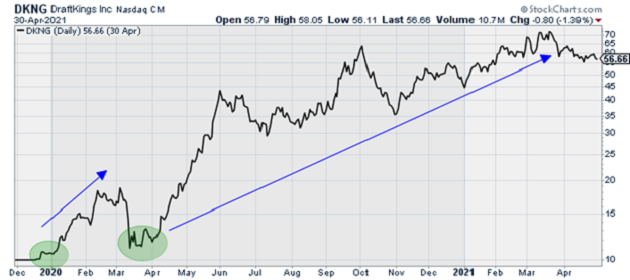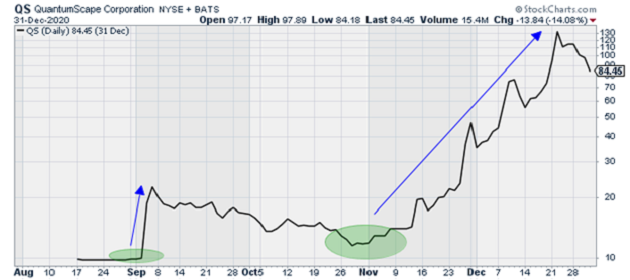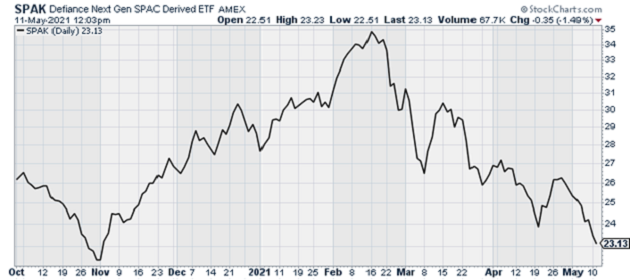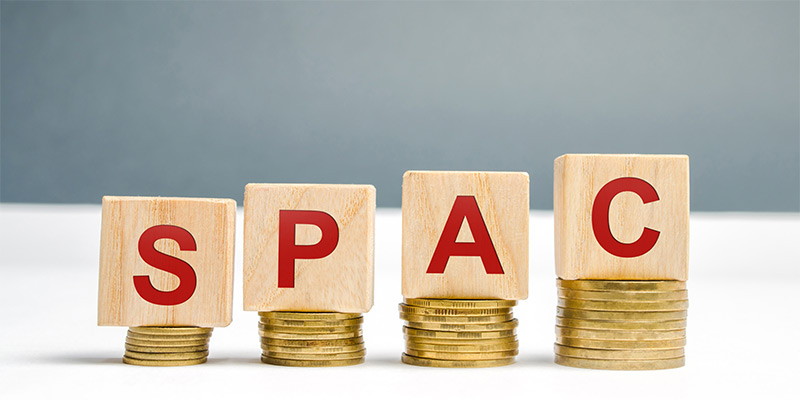History doesn’t repeat itself.
…but it rhymes.
I’m sure you’ve heard this saying before. It’s attributed to Mark Twain.
Folks use it all the time when discussing politics, current events, and—of course—investing.
You most commonly hear it when folks are talking about market bubbles or commodities, which are extremely cyclical… meaning they go through predictable boom and bust cycles.
But there’s also a widely misunderstood group of stocks that follow a predictable pattern.
Investors who understand this “life cycle” can collect hundreds of percent gains in a matter of months... if they strike at the right time.
And unlike commodities, these buying opportunities don’t appear once every few years. They pop up often in the market.
Today, I’ll show you how you can regularly take advantage of these opportunities. But first, let me be clear:
- The stocks I’m talking about are NOT IPOs.
If you’re a longtime reader, you know I’m the “IPO guy.” An IPO, or initial public offering, is when a company makes its debut on the stock market.
The best ones storm out of the gate like a thoroughbred horse. They can deliver big returns in a short time.
But the stocks I’m talking about are different. These unique stocks offer a “backdoor” way to get into some of the world’s best private companies months before they go public.
- I’m talking about SPACs—special purpose acquisition companies…
A SPAC, in a nutshell, is a vehicle a private company can use to go public. A SPAC allows a company to circumvent the “normal” IPO process.
Going public via SPAC is cheaper, faster, and less burdensome than a traditional IPO. For that reason, there has been an explosion in smaller companies going public via SPACs.
While they’ve been around for decades, SPACs officially became the hottest investment on Earth in 2020…
Space tourism company Virgin Galactic (SPCE) soared 239% between November 2019 and February 2020. DraftKings (DKNG) also had a phenomenal run… surging more than 270% in 2020. We also booked a 395% return on VTIQ between March and June last year in my IPO Insider advisory.
These are big gains. But…
- You could have made even more money by taking advantage of a predictable pattern that plays out all the time in SPACs.
I call this the “SPAC life cycle.”
If you know when to buy during this life cycle, you stand to collect huge returns.
There are three key parts of this life cycle to know...
- The “pre-announcement” stage
- The SPAC announces which company it will take public
- The deal closes and the underlying company goes public.
Now, many people think the best time to buy a SPAC is as early as possible, during stage 1 of this life cycle. But my research shows there’s a better way…
You see, many SPACs immediately surge after they announce which company they plan to take public.
But eventually that excitement wears off. Investors will move on to the next “exciting” opportunity… sending the SPAC share price falling back to earth.
- This sell-off often sets up a second money-making opportunity.
Let’s look at a couple of examples…
This chart shows performance of online sports betting pioneer DraftKings (DKNG), which recently went public via a SPAC.
In December 2019, the SPAC Diamond Eagle Acquisition Corp. (DEAC) announced that it was going to take DraftKings public. Prior to the announcement, DEAC was trading near its NAV of $10 per share.
[NAV stands for “net asset value.” It’s the theoretical value of a company’s assets minus liabilities.]
After the announcement, DEAC’s share price exploded nearly 100% within three months.
But, as often happens with SPACs, the excitement over the deal faded away.
- DEAC plummeted all the way back to about $10.50 during the “corona crash” last March…
This gave investors a second opportunity to invest in DEAC.
From there, DEAC nearly doubled leading into its reverse merger with DKNG.
DraftKings finally went public on April 24. It opened at $20.49. Within a year, it hit $74 per share.
 Source: StockCharts
Source: StockCharts
In other words, investors didn't just have one chance to strike gold on DraftKings. They had two opportunities to play its SPAC life cycle.
You could have doubled your money on the initial hype wave. And then made even more money buying again after the initial hype wore off.
Of course, DraftKings isn’t unique in this sense.
- Many SPACS follow this roadmap…
They soar on the initial hype of their merger announcement… sometimes delivering gains of 50%... 70%... or even 100% in a matter of weeks or months.
They then fall back down, providing a second opportunity for investors to buy.
Here’s another example. This chart shows the performance of battery company QuantumScape (QS). You can see that it spiked in early September after Kensington Capital Acquisition Corp. (KCAC) announced that it would be taking QuantumScape public in a SPAC.
Investors who caught this move had the opportunity to make nearly 150% in just two days!
But, as often happens with SPACs, the initial excitement faded away. KCAC drifted lower over the next few months… eventually setting up an even bigger buying opportunity.
In November, you could have bought shares of KCAC at a 50% discount to its all-time highs… and just before it completed its reverse merger with QuantumScape.
QuantumScape would go on to surge more than 11-fold over the next two months. That’s enough to turn every $10,000 invested into $110,000.
 Source: StockCharts
Source: StockCharts
This pattern plays out repeatedly in the SPAC market. In many cases, you’ll get the chance to buy into the SPAC for close to $10/share. For reasons I won’t get into here, $10/sh. is a "soft floor” that most SPACs won’t fall below.
So, buying the right SPAC near $10/sh. can present a lot of upside with relatively low risk.
And that’s especially important today.
- The SPAC market has been crushed lately…
There’s almost no excitement around SPACs.
The chart below says it all. You’re looking at the performance of the Defiance Next Gen SPAC Derived ETF (SPAK), which invests in a basket of SPACs. You can think of it as a way to gauge the overall sentiment toward SPACs.
 Source: StockCharts
Source: StockCharts
You can see SPAK got hit especially hard during the recent pullback.
This is the complete opposite of how things were a year ago.
Remember, 2020 was a full-blown SPAC mania.
That’s why we largely avoided the space.
There was simply too much hype around SPACs. It was a crowded trade.
But they’ve done a complete 180.
- At this point, SPACs are extremely “oversold.”
Many are now trading near their cash value of $10/sh.!
Investors who buy in at these levels stand to make big returns without taking on much risk.
In short, today’s the perfect time to go shopping for top-tier SPACs.
More soon...
Justin Spittler
Chief Trader, RiskHedge




